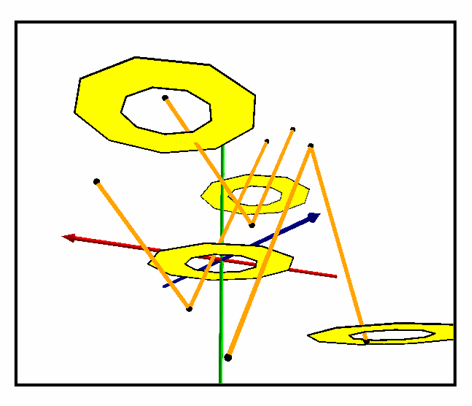 |
This document is archived and information here might be outdated. Recommended version. |
 |
This document is archived and information here might be outdated. Recommended version. |
Indicates if the two geometries share no points in common. Negate this result to compute the Intersect relation.
[Visual Basic .NET] Public Function Disjoint3D ( _ ByVal pOther As IGeometry _ ) As Boolean
[C#] public bool Disjoint3D ( IGeometry pOther );
[C++]
HRESULT Disjoint3D(
IGeometry* pOther
);
[C++] Parameters pOther
pOther is a parameter of type IGeometry*
Determines whether two z aware geometries intersect in 3D space. Two geometries are disjoint if their intersection is empty. Two geometries intersect if disjoint is FALSE.

public static void TestIntersection()
{
IGeometry polylineGeometry = GetPolylineGeometry();
IGeometry polygonGeometry = GetPolygonGeometry();
IRelationalOperator3D relationalOperator3D = polylineGeometry as IRelationalOperator3D;
bool intersect = !(relationalOperator3D.Disjoint3D(polygonGeometry));
//intersect = true
}